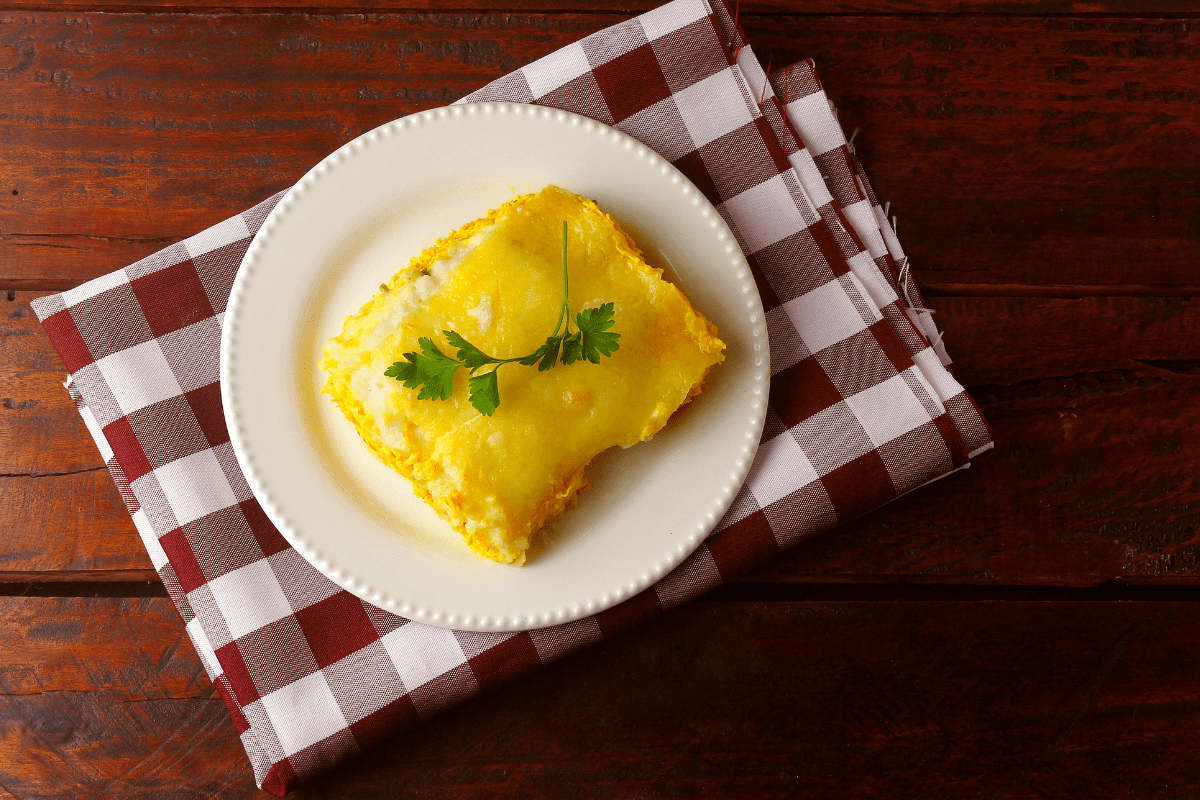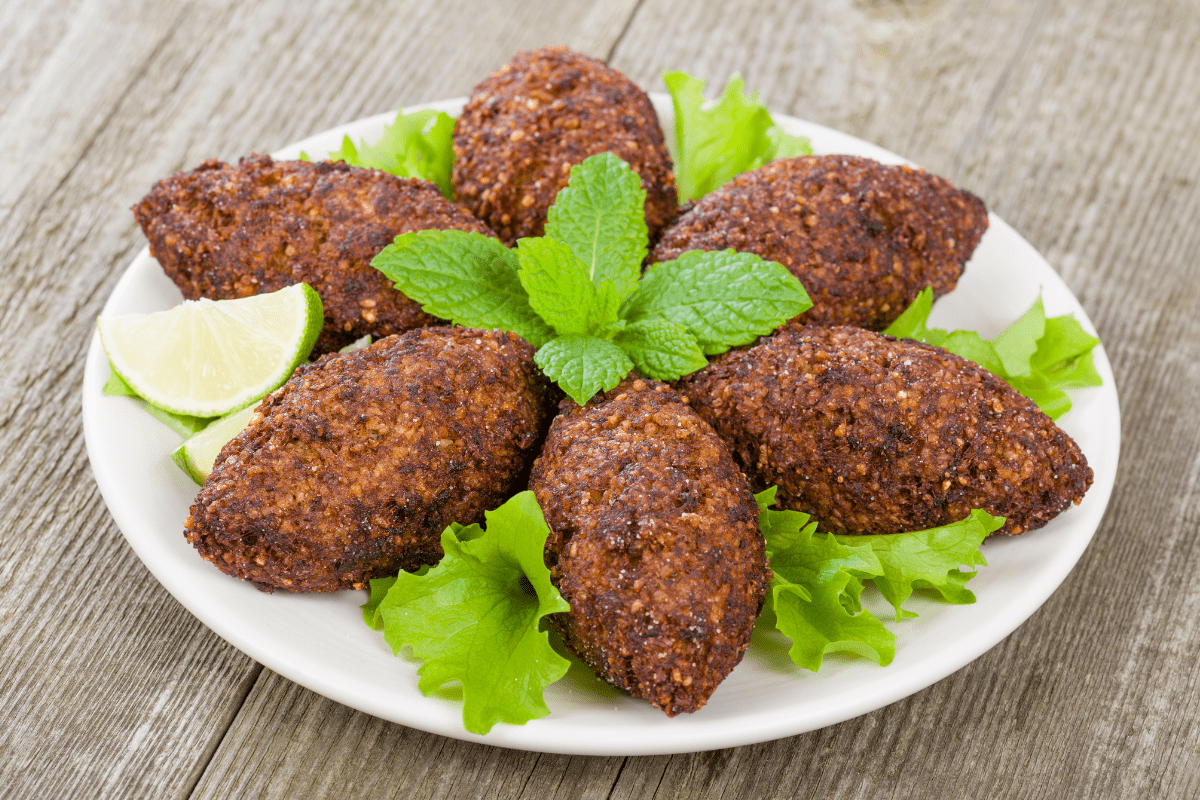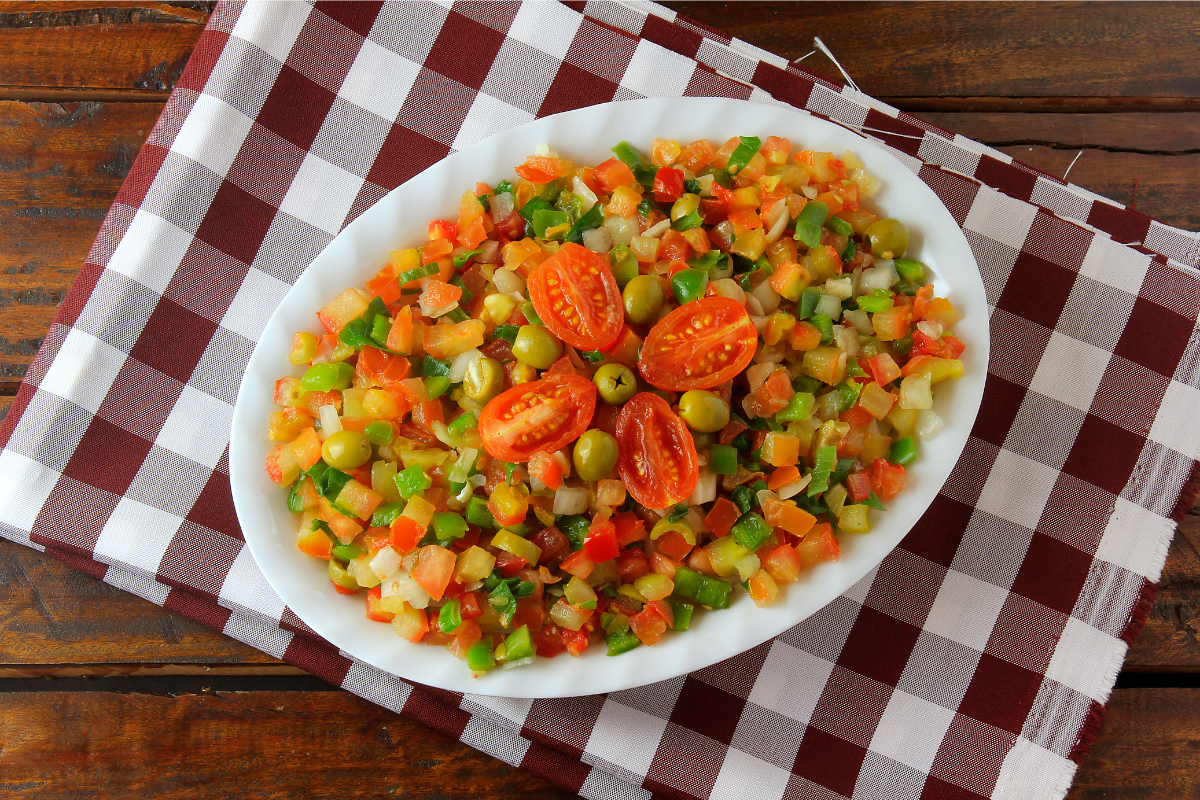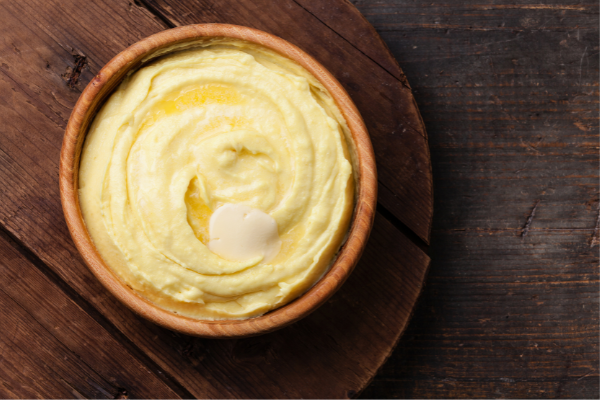
Escondidinho is popular all over Brazil as an inexpensive yet tasty comfort dish. It is, essentially, a shepherd’s pie, with a few classic Brazilian twists. The most important difference between shepherd’s pie and escondidinho is the topping: instead of the mashed potato layer of a traditional cottage pie, escondidinho substitutes whipped yuca root (or cassava).
The meat layer of escondidinho is also subject to variation depending on the region and personal preferences. While traditional shepherd’s pie tends to favor ground beef, pork, or lamb, escondidinho can incorporate a wide array of proteins.
The original Brazilian shepherd’s pies used dried and salted meat as the bottom layer. Today, escondidinho can be made with whatever meat you choose, from shrimp to beef. We will be using shredded chicken, which pairs beautifully with the sauteed vegetables and creamy yuca topping. It is also a bit lighter than ground beef or pork, but feel free to substitute whichever meat you like.
What is Yuca?
Yuca, also known as manioc or cassava, is a shrub native to South America. It is cultivated predominantly for its root, which is starchy and a good source of carbohydrates. The root is eaten in much the same way as a potato, usually boiled, baked or fried. Like the potato, a powdered starch is also processed from the root and used in place of wheat flour in many parts of the world, including Brazil. You may also know this flour by the name, “tapioca starch.”
Can You Make Vegan Escondidinho?
Of course! For the vegan “meat” layer, you could easily substitute some hearty roast vegetables and a nutritious legume, like lentils. This recipe for stewed lentils with eggplant would make a perfect vegan base for your Brazilian shepherd’s pie.
For a vegan version of your whipped yuca, swap out the butter for cashew butter and substitute a nut milk of your choice, preferably plain soy or cashew.
Mashed Potatoes vs Yuca for Brazilian Shepherd’s Pie
Although the yuca is a decidedly Brazilian component of this dish, you can certainly substitute potatoes if you wish. Many Brazilians also use mashed potatoes for their escondidinho casserole. Yukon gold and russet potatoes make for the creamiest topping, but you can use any potatoes you like. Again, you can keep it dairy free by using cashew butter and milk. Use the same volume of potatoes as you would yuca.
Brazilian Style Shepherd’s Pie (Escondidinho de Frango)
Ingredients:
For the Yuca Mash
2 lbs yuca root, peeled and cubed
2 tbsp unsalted butter
1 cup whole milk (you can use skim, if you want)
½ tsp salt
Freshly ground black pepper to taste
1 cup shredded cheddar cheese
For the Chicken
1 small onion, diced
2 cloves garlic, minced
4 boneless, skinless chicken breasts
1 cup chopped collard greens or kale
1 tablespoon tomato paste
½ cup chicken stock
½ cup white wine (not sweet)
1/4 cup shredded carrots
¼ cup sweet green peas
Kosher salt
Directions:
- Preheat your oven to 350 degrees Fahrenheit.
- Cook the chicken. Put the chicken breasts in a large stock pot and cover with water completely. Add 2 tsp of salt to the water. Bring to a boil, then reduce to medium. Cover, and simmer until chicken is cooked through (about 20 minutes).
- Shred the chicken on a plate with two forks. Set aside.
- In another pot, put your diced yuca root and cover with more salted water. Bring to a boil, then reduce to medium and cook the yuca until fork tender (20-25 minutes).
- While the yuca simmers, melt the butter and warm the whole milk in the microwave for about 1 minute.
- When the yuca is finished, pour in the melted butter and warmed milk. Add in your cracked black pepper and whip with a hand mixer until creamy and uniform. Taste for salt and add more if needed. Set your mashed yuca aside.
- Heat a skillet over medium heat. Pour in a drizzle of oil, and add in your diced onion and carrots. Cook until softened, about 2 minutes.
- Now add in the garlic and cook for another thirty seconds until just fragrant.
- Add the shredded chicken, collard greens, and peas to the pot. Mix in the tablespoon of tomato paste.
- Cover with the white wine and chicken stock.
- Simmer your chicken mixture over medium heat until the liquid has mostly evaporated. Taste for salt and add more as needed.
- Layer your chicken mixture in the bottom of a non-stick casserole dish.
- Spread the whipped yuca mash over the top of the chicken. Top with cheese.
- Bake your casserole until the cheese is melted and the yuca is golden brown around the edges (40 minutes).
Enjoy!
Other Great Recipes to Try:
- Slow-Cooker Brazilian Fish Stew (Moqueca)
- Brazilian Chicken and Saffron Rice (Galinhada)
- Paleo-Friendly Mashed Potatoes: Creamy Garlic Yuca



